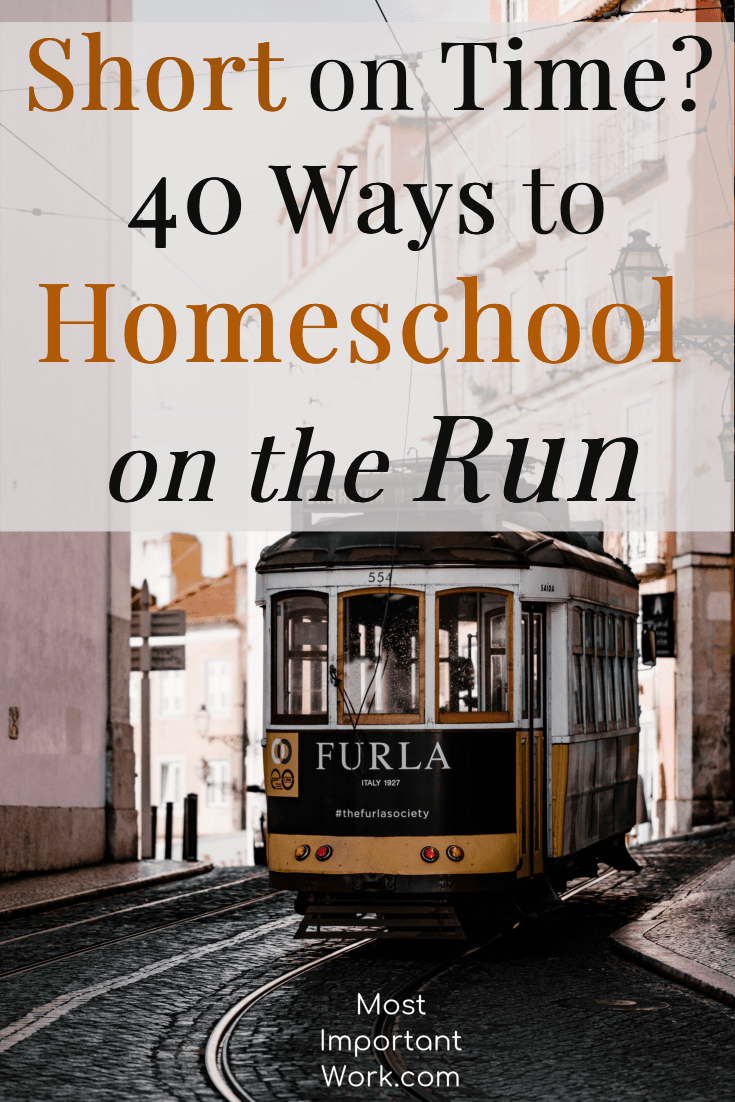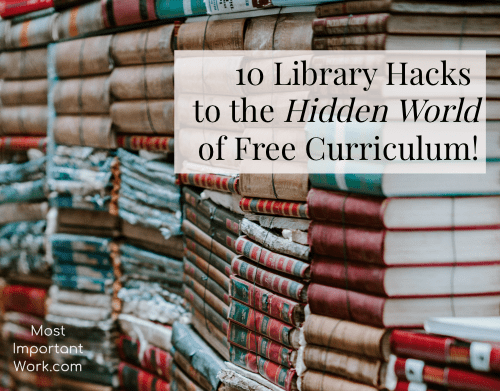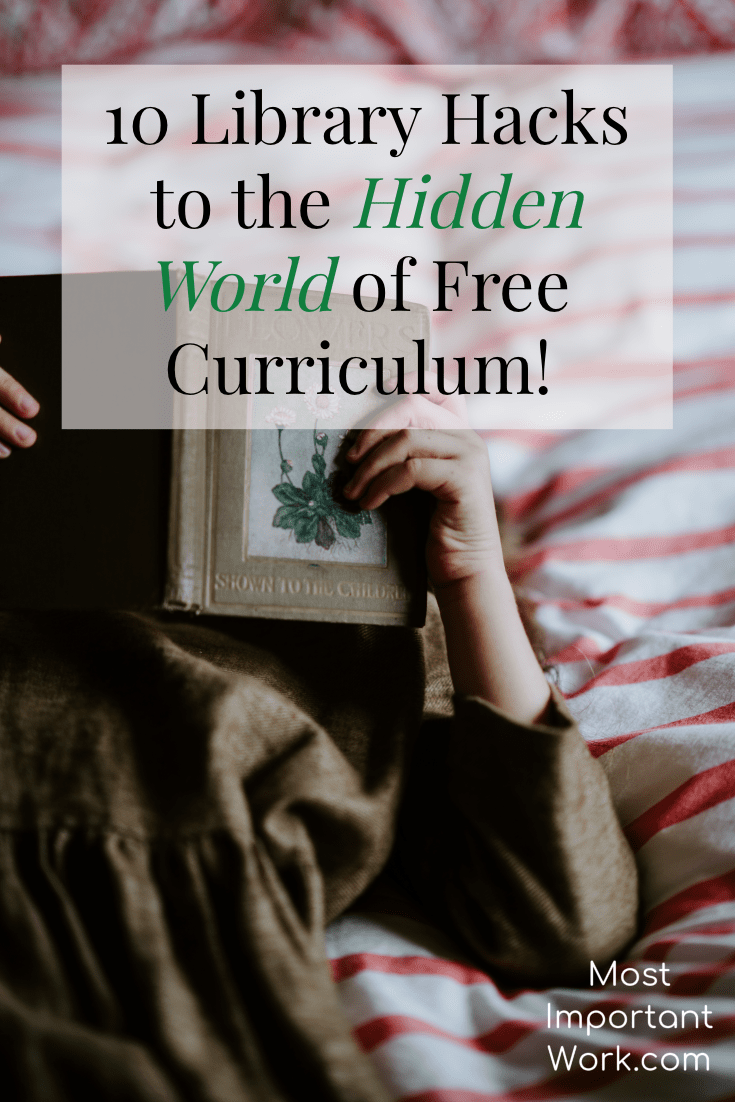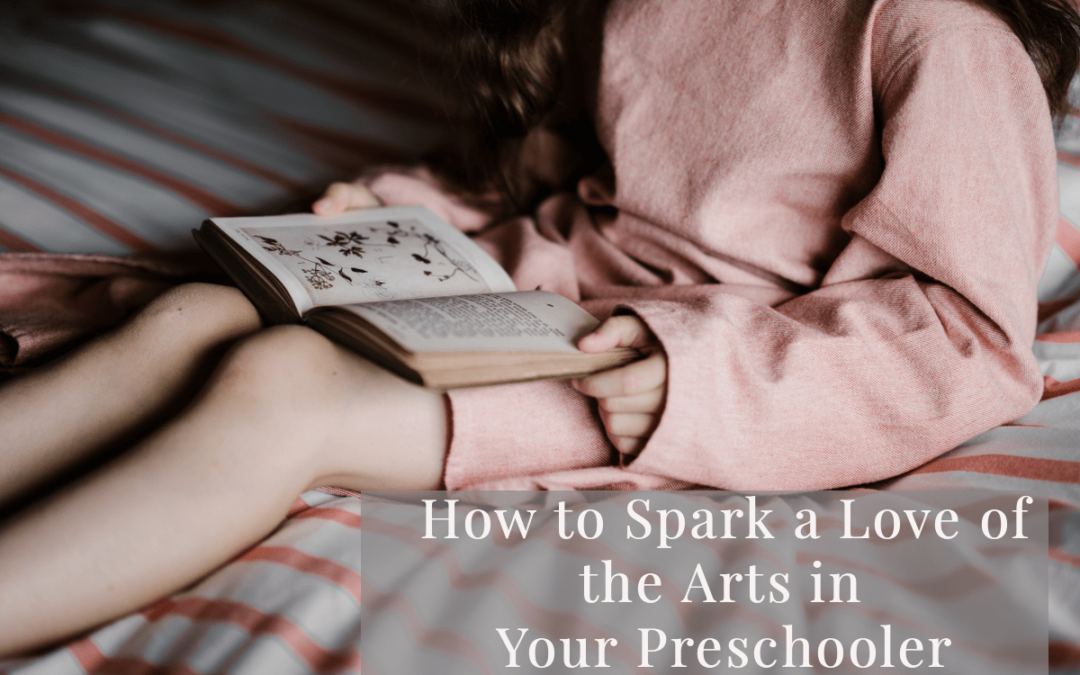
Short on Time? 40 Ways to Homeschool on the Run
Reading Time: 3 min 14 sec
Have you ever felt like you spend way too much time in the car running the kids from activity to activity? There are seasons throughout the year where no matter how you slice it, time in the car seems to grow exponentially. Doctors’ visits, milk runs, trips to the library, vacations, soccer practice, church, field trips, swim practice, Starbucks runs (just being real), you get the point. There is A LOT of driving.
I am a big proponent of allowing space for great conversations and even silence on road trips. However, there are times when you need to pull a Mary Poppins and grab an activity out of the bag. What I love about car schooling, is that pretty much any subject can be learned in the car. Chemistry? Memorize the Periodic Table. Math? Memorize the Multiplication Tables.
What I love about car schooling is that you have limited distractions, and you get to spend concentrated time fostering your child’s imagination. You get the opportunity of exposing them to a wide variety of literature, music, history, science; all from the comfort of your own car. In this article, we are going to talk about our top 40 resources for homeschooling on the run.
The top resources are broken into four categories:
-
Individual Games
-
Music
-
Art
-
Audio Books
So let’s dive in…

Car Games & Activities
Here are six individual and group games that are great for family road trips! Ages 4 & Up
- Geoboard Math
- Rory’s Story Cubes Language Arts
- Math Dice Jr. Math
- Rush Hour Logic
- Brain Builders Logic
- Magna-Tiles STEM
* Story Cubes is an amazing game that encourages children to tell a story using the story prompts on the dice. This is a game, that even the driver can play. Just have one designated person to roll the dice and call out the results.
Music
Music is great for those times when you are running errands and the constant stops prevent you from really engaging in an audiobook.
My children have learned SO MUCH from listening to great music into their time in the car. We have not only listened to a variety of styles (classical, jazz, big band, country etc.) but we have also memorized multiplication facts, state capitols, and the periodic table.
The Classical Kids collection is AMAZING! Each cd tells the story of a famous composer set to music. We have listened to these CDs hundreds of times for years. They have really fostered a love of classical music in my children. LOVE!
I would encourage you to browse your local library’s audio collection (or Spotify) but in the meantime, here are some of our favorite audio CDs. Ages Three & Up
8. Classical Kids-Mozart’s Magnificent Voyage
9. Classical Kids-Mozart’s Magic Fantasy
10. Classical Kids-Tchaikovsky Discovers America
11. Classical Kids-Beethoven Lives Upstairs
12. Classical Kids-Mr. Bach Comes to Call
13. Classical Kid’s ChristmasBeethoven’s Wig Series 1
14. Beethoven’s Wig 2, More Sing Along Symphonies
15. Brain Beats 16. Brain Beats #2
18. Beth Manner’s Fun French for Kids
19. Beth Manner’s Magic French for Kids
Art
We love these activity/art books! It is amazing to watch your children learn about STEM, Geography, Art, Math, History, and Language Arts on the way to grandmas just from an activity book! Ages 4 & Up
Optional: You might want to think of finding a lap desk for your child, depending on how much they enjoy doing art in the car.

Here are some of my FAVORITE resources:
20. Extreme Dot to Dot Around the World 8+
21. Rosie Revere’s Big Project Book for Engineers Andrea Beaty
- Impressionist Coloring Book Patience Coster
- Draw Europe Kristin Draeger
- Draw the USA Kristin Draeger
- Draw. Write. Now. Series Marie Hablitzel and Kim Stitzer
- Paint By Sticker Kids: Zoo Animals
- Etch A Sketch
- Silly Putty
Audio Books
Audiobooks are an amazing way to expose your children to great literary content while saving your voice. Woohoo!
Helpful tip: When choosing titles, take your child’s personality and the books recommended ages into consideration. When you remove the task of deciphering the words, children can comprehend more advanced forms of writing.
Ages 4 & Up
29. Amelia Bedelia Series Peggy Parish 30. Madeline Series Ludwig Bemelmans 31. The Paddington Bear Series Michael Bond
32. Mercy Watson Series Kate DiCamillo 33. The Wind in the Willows Kenneth Grahame
34. Betsy and Tacy Maud Hart Lovelace
35. Henry Huggins Series Beverly Cleary
36. The Melendy Series Elizabeth Enright
37. The Boxcar Children series Gertrude Chandler Warner
38. Pollyanna Eleanor H. Porter
39. Mrs. Frisby and the Rats of NIHM Robert C. O’Brien
40. Little Men Louisa May Alcott
What about you? What are your favorite ways to take advantage of travel time? Please feel free to leave me a Comment and don’t forget to follow Most Important Work on Pinterest!
Want to dive in deeper? Check out these 2 Bonus Resources:
- Give Your Child the World Jamie C. Martin
- Read A-Loud Family Sarah Mackenzie









